Golden Columnar English Yew
$44.50 Original price was: $44.50.$31.15Current price is: $31.15.
- Free Shipping over $25
- Fast & reliable delivery options
- Enjoy top quality items for less
- Multiple safe payment methods

Like people, gardens pass through stages of growth. A young garden is all fast-growing plants and vigorous young trees and shrubs. As it reaches middle-age things slow down, and mature forms start to emerge from the juvenile chaos. In older age shade often takes over, as the young saplings planted years ago become spreading giants. When planting a garden of any age, we should plan ahead (as in life), so that the mature garden will have plants of the stature and longevity maturity needs. If for no other reason, (and there are plenty more), this is why you should plant the Golden Columnar English Yew. As a young guy it will grow fast enough – 12 inches in a good year – to satisfy your need to see progress, but it is in maturity that we can fully appreciate the wonderful character of a plant like this. Specimens can easily be 200 or 300 years old – the oldest yews in England are about 5,000 years old – so it will be around for your great-great-great-great grandchildren, and with luck for many generations more.
Growing the Golden Columnar English Yew
Size and Appearance
The Golden Columnar English Yew is an upright evergreen conifer with a slender form. It grows 6 to 12 inches a year when young, slowing down as it matures, so after just 10 years it should be 10 feet tall under good conditions, with a width of just 2 or 3 feet. Growth will slow after that, but 30 feet tall and up to 8 feet wide is a reasonable size for a mature specimen. Of course, for many of us we will trim it to whatever size we need, and like all yew trees it trims beautifully, into as neat and formal a shape as the most obsessive gardener could even want. Unlike many other upright trees, it doesn’t have a pyramidal shape, and the top is usually as wide as the base, or even a little wider if it isn’t trimmed.
The leaves are soft needles, about 1½ inches long, and new growth is a beautiful golden yellow, maturing slowly into a light green. This bush looks like it has been brushed with butter, and it really is very beautiful in every season of the year. Older plants may produce a crop of bright red berries in fall. These have a sweet flesh, as the birds know, but the seeds are poisonous if crushed, so don’t eat them. The foliage is poisonous to horses and cattle, and to dogs and cats as well, although they rarely bother to eat them. While often fatal, many yards have yew trees of one kind or another, but cases of poisoning are rare.
Using the Golden Columnar English Yew in Your Garden
This tree is a great choice where you want a strong ‘exclamation point’ in your garden, to catch the eye and make you linger. Use it anywhere in beds, and especially in foundation planting around your home, for example between windows, or beside a door, perhaps as a matching pair. It looks good in casual gardens as an upright specimen, or in more formal gardens at the corners of paved areas, or as a center-piece. It can be used as a hedge or screen too, especially where you don’t have much width available. Plant at 3-foot intervals for a solid hedge, or up to 10 feet apart for a striking avenue. It also grows well, and for years, in a tub or planter.
Hardiness
The Golden Columnar English Yew is hardy from zone 6 to zone 8. In zone 6 plant in a sheltered spot and be sure to water deeply in late fall, as winter burn is possible on young plants. Once well-established this is unlikely to continue.
Sun Exposure and Soil Conditions
Although it will grow well in full sun, like all yew trees this plant is especially useful for partial shade, and light full shade as well. The gold coloring holds well in shade, just turning green a little sooner. As for soil, all it asks for is good drainage – yew trees don’t like ‘wet feet’. Don’t plant in low-lying areas, and on clay soils it will do best on slopes, or planted on a low mound. It grows well in both acid and alkaline soils.
Maintenance and Pruning
Although naturally upright, you might choose to trim it, and few if any plants trim as easily and as well as yew. Trim once the new growth has matured in late spring, and anytime up to early fall. Don’t trim late, especially in zone 6, because this can stimulate new growth, easily damaged by winter cold. You are very unlikely to see any pests or diseases, and some evergreen fertilizer in spring is all the trouble you need to take.
History and Origin of the Golden Columnar English Yew
The English Yew, Taxus baccata, has a long history. Once wide-spread across Europe into the Middle East and north Africa, it has declined ever since humans invented the axe. In gardens it has been grown as a hedge plant for centuries. Unusual forms have been collected for a long time, and in 1780 a farmer called Mr. Willis dug up a plant growing wild in the hills above his farm in Fermanagh, Ireland. Pieces of it were soon being distributed, and this narrow, upright tree became famous as the Irish Yew. It is a female plant, and produces seeds, so lots of seedlings have been grown from it. At least two nurseries in Britain – the Knap Hill Nursery of the Waterer family, and Dickson’s Nurseries in Chester – found plants with golden foliage among those seedlings, and it seems to have been first listed for sale around 1868. Sometime later plants must have been brought across to America. We don’t know the exact lineage of our plants, but all the golden seedlings are virtually identical.
Buying the Golden Columnar English Yew at the Tree Center
You might be looking for an attractive upright golden evergreen, or thinking of leaving the legacy of an ancient specimen for future generations. Either way the Golden Columnar English Yew is a superb choice. Easy to grow, with almost no care needed, these plants are not often available, so we know they won’t last long. Order quickly, but plant slowly.
Be the first to review “Golden Columnar English Yew” Cancel reply
Related products
Evergreen Trees
Arborvitae Trees
Evergreen Trees
Evergreen Trees
Cryptomeria Trees
Evergreen Trees
Evergreen Trees
Cypress Trees

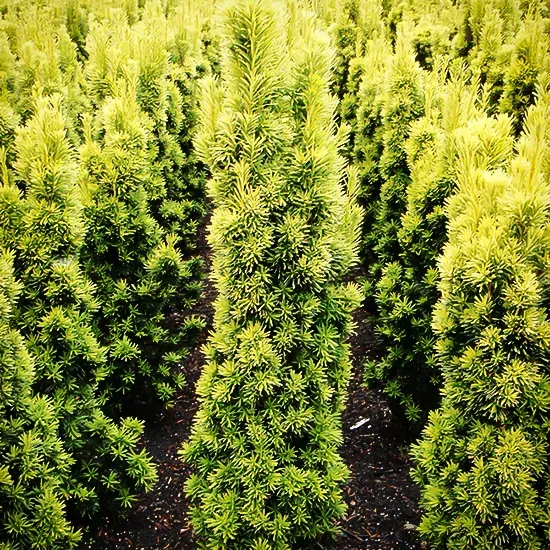
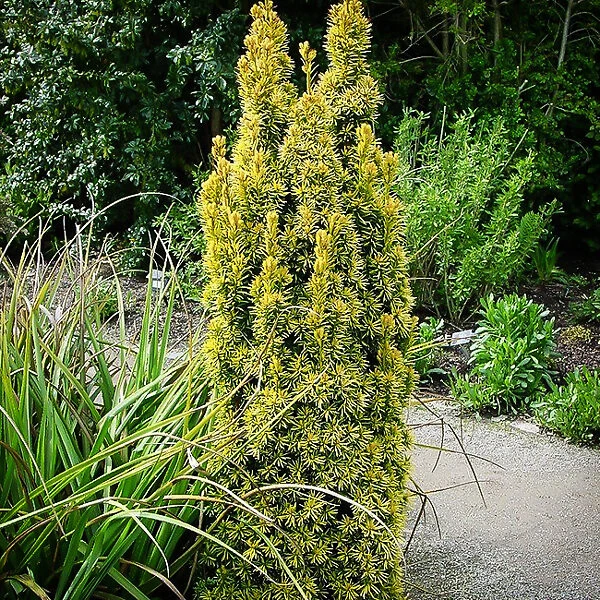
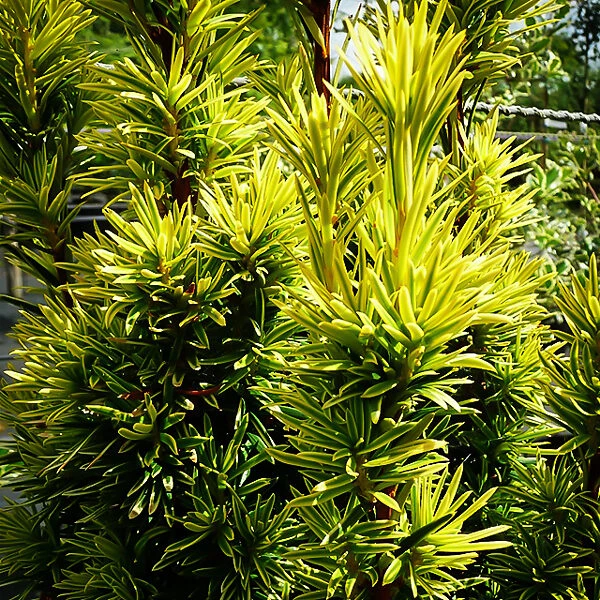

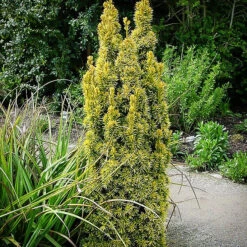
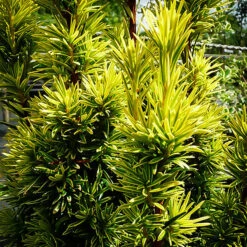



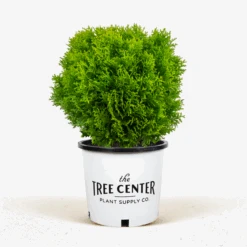
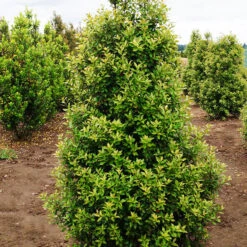

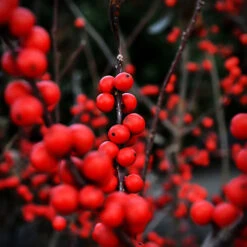

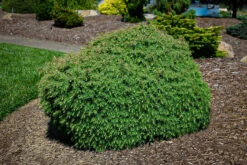


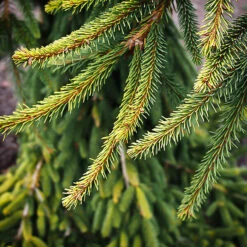


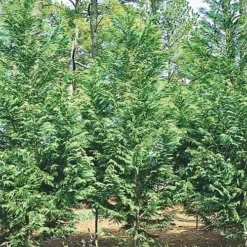

Reviews
There are no reviews yet.